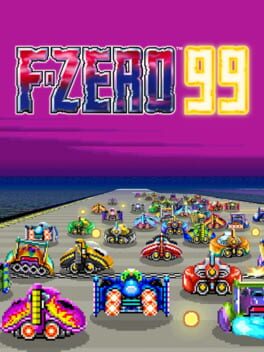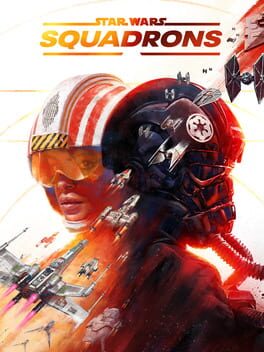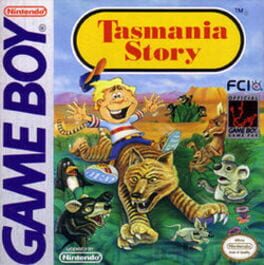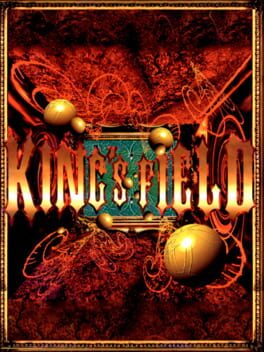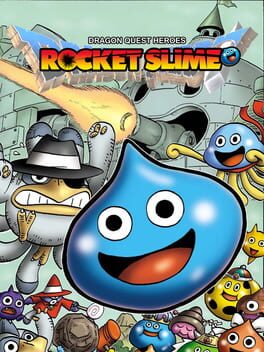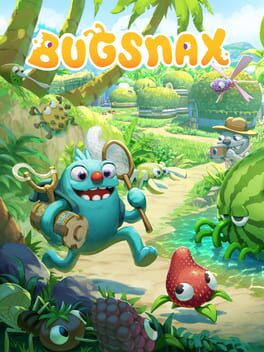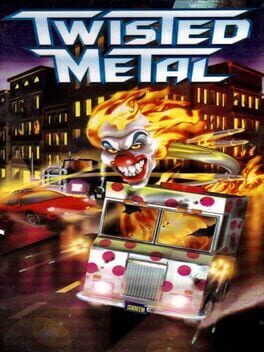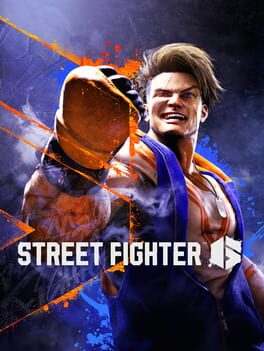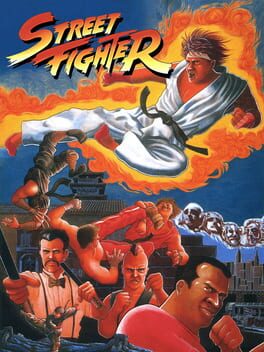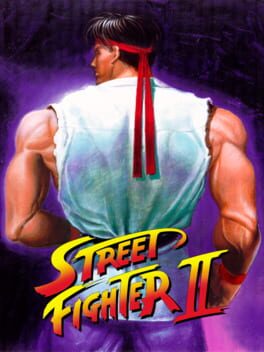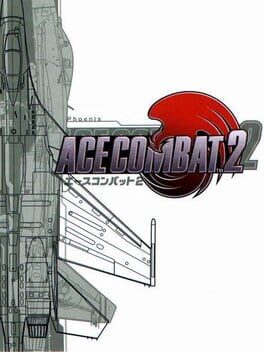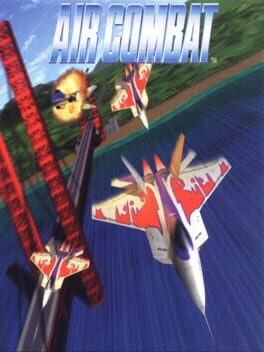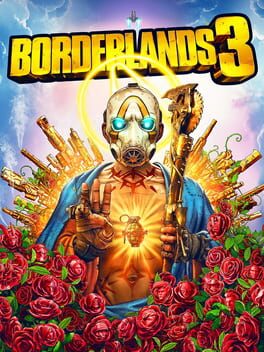shaniji93
2023
"Robo wants an Oreo" - 2023
2023
Just a month after this game's released, Nintendo have released all 15 F-ZERO tracks.
This is will bite them back, as player retention will definitely be affected with the low amount of racetracks and people will get tired of playing Mute City I/Big Blue ever goddamn time it gets selected in the F-ZERO 99 mode, or playing Death Wind II/Port Town II in the PRO TRACKS mode, while tracks like Silence, White Wind II and Fire Field aren't selectable in the PRO TRACKS nor are in the MINI PRIX rotation.
I have little faith in Nintendo that they will do some more proper post launch content updates, like adding more racers (very unlikely), adding the never officially released BS F-ZERO 2 tracks, or maybe, god forbid, adding new tracks that may or may not allude to a future proper F-ZERO game.
We're giving too much credit to ol' Nintendo here, remember that Mario 35 didn't even last a year from it's release in the 1st of October 2020 till shutting down the servers in end March 2021, nor did Pacman 99 for that matter, and Tetris 99 is just Tetris, that game can survive a nuclear server shut down for all it's worth, lmao.
Shit is addictive but shits not gonna last long.
This sucks man
This is will bite them back, as player retention will definitely be affected with the low amount of racetracks and people will get tired of playing Mute City I/Big Blue ever goddamn time it gets selected in the F-ZERO 99 mode, or playing Death Wind II/Port Town II in the PRO TRACKS mode, while tracks like Silence, White Wind II and Fire Field aren't selectable in the PRO TRACKS nor are in the MINI PRIX rotation.
I have little faith in Nintendo that they will do some more proper post launch content updates, like adding more racers (very unlikely), adding the never officially released BS F-ZERO 2 tracks, or maybe, god forbid, adding new tracks that may or may not allude to a future proper F-ZERO game.
We're giving too much credit to ol' Nintendo here, remember that Mario 35 didn't even last a year from it's release in the 1st of October 2020 till shutting down the servers in end March 2021, nor did Pacman 99 for that matter, and Tetris 99 is just Tetris, that game can survive a nuclear server shut down for all it's worth, lmao.
Shit is addictive but shits not gonna last long.
This sucks man
2020
2023
1991
Very obscure Game Boy game for a very obscure tie-in movie of the same name, that has no business in being a game.
Published by FCI in the US, with developer credit left up to interpretation but it's mostly an in-house developed game.
Tasmania Story plays like a terrible version of Namco's Mappy, but is actually a terrible old port of a mediocre MSX game, Fruit Panic. In essence, the gameplay consists of collecting all the items, plus bonus items for that sweet extra points (like that has any of value in 2023 let alone even in 1991), in a single screen level with a 5 level platform. It be a simple and very mind numbing game, but at least they had the courtesy of placing enemy obstacles in the level. Eliminating the roaming monsters is simply done by landing on top of them from a platform, or with the use of a limited number of bombs (The bombs don't really explode in time nor explode for that matter, that's a minus star in graphics already there). Ok sure, sounds simple enough, right? Well… the controls is where shit hits the fan, they are very unresponsive to the point where you are always ganged up by the monsters with little to no chance in deploying your bombs, because of how slow the control responds to your inputs, it doesn't help that the game is quite fast paced too.
Not much to say, it's a port of an old Mappy clone that doesn't spruce up the gameplay for 1990's Game Boy standards.
The graphics are just awful even for an early Game Boy game, with it's only saving grace is the impressive opening demo, but that isn't saying much. Items and bonus items try to tie itself to the Film, so they represent the Australian flora and fauna along with the wildlife as the bonus items, like generic cacti, generic triangle shaped trees, Koalas and Penguins as examples. Monsters are generic smiling cat-eared demons with no body, and the player is ablackfaced generic boy with a striped shirt, short and a ballcap hat. Yeah that totally did not age well
Music is only in the opening demo, not much to say again.
Story is non-existent, it tries it's darnest to tie-in with the Film, a drama-after-school special film, where a Japanese kid visites his Father in Australia and help him find the extinct Tasmania Tiger, that had it's last know appearance back in the 1960's.
This is no Kosuge, this is just shit.
Published by FCI in the US, with developer credit left up to interpretation but it's mostly an in-house developed game.
Tasmania Story plays like a terrible version of Namco's Mappy, but is actually a terrible old port of a mediocre MSX game, Fruit Panic. In essence, the gameplay consists of collecting all the items, plus bonus items for that sweet extra points (like that has any of value in 2023 let alone even in 1991), in a single screen level with a 5 level platform. It be a simple and very mind numbing game, but at least they had the courtesy of placing enemy obstacles in the level. Eliminating the roaming monsters is simply done by landing on top of them from a platform, or with the use of a limited number of bombs (The bombs don't really explode in time nor explode for that matter, that's a minus star in graphics already there). Ok sure, sounds simple enough, right? Well… the controls is where shit hits the fan, they are very unresponsive to the point where you are always ganged up by the monsters with little to no chance in deploying your bombs, because of how slow the control responds to your inputs, it doesn't help that the game is quite fast paced too.
Not much to say, it's a port of an old Mappy clone that doesn't spruce up the gameplay for 1990's Game Boy standards.
The graphics are just awful even for an early Game Boy game, with it's only saving grace is the impressive opening demo, but that isn't saying much. Items and bonus items try to tie itself to the Film, so they represent the Australian flora and fauna along with the wildlife as the bonus items, like generic cacti, generic triangle shaped trees, Koalas and Penguins as examples. Monsters are generic smiling cat-eared demons with no body, and the player is a
Music is only in the opening demo, not much to say again.
Story is non-existent, it tries it's darnest to tie-in with the Film, a drama-after-school special film, where a Japanese kid visites his Father in Australia and help him find the extinct Tasmania Tiger, that had it's last know appearance back in the 1960's.
This is no Kosuge, this is just shit.
1994
A lot like many other folks, we all in someway or form get to experience FromSoftware's Dark Souls as that kind of "hard as nails" game experience and it left quite the impression among generations of avid video game players.
Dark Souls left me with the curiosity of who were FromSoft and what games they've made before Dark Souls became a household name?
This lead me to binge FromSoft's Playstation 1 games: Armored Core with it's sequels, and their first game they've ever made : King's Field and it's sequels too.
Yes, I've gone out of my wayto download to borrow and play the japan-only game, for which the reason why it wasn't released internationally still alludes me.
First thing first, the graphics.
As alluded in my other reviews of PS1 games, I have a major soft spot for early PS1 low poly graphics because of how they evolve in the PS1's lifecycle, and how aged pretty well in comparison to many indie games going for that same aesthetic. King's Field is no different from it's early title companions, heck, I could say it's very impressive since it was FromSoft first title since they were office software developers before. Graphically, the way how they convey what environment should look like without using more complex static polygons is the use of wall and floor textures. For example, they can't really render that many static trees without tanking the frames, they simply just mapped tree textures on the wall and used brownish dirt floor textures to make it seem like it's an underground forest or woods. The environment varies from floor to floor with these wall and floor textures to convey different environments, from the first level's stone walls and dirt floor to the final level's Hellish fleshy walls and bone flooring. It leaves a lot to be desired but I believe it works and it plays on the player's imagination. The Monsters and Human NPCs are easily conveyable with their distinct shapes they don't need too much details to know who or what they are, but human faces are rendered so simplistic, they are practically faceless, that might give very impressionable people nightmare fuel, so be warned.
Story is just as minimalist as Dark Souls'.
The game presents you with a title crawl ala Star Wars with a POV shot of you the player slowly walking thru a cathedral to a teleporter to enter the underground world in King's Field.
You play the role of Jean Alfred Forester, Royal Knight of the Kingdom of Verdite, exploring the underground labyrinth of Verdite's cathedral in search of your father, Commander Hauser, and the King Reinhardt III, who was on an expedition with the commander and his troops down under there to search for magic artefacts and quel rumors of an evil dark power slowly re-awaking.
It's a pretty straight forward, DnD style dungeon campaign story-wise.
Gameplay-wise, King's Field plays like a 3D adventure RPG dungeon crawler, where you gain experience, earn gold, and ranked up by slaying a diverse numbers of mobs, with a very Metroivania-esque map design where there are secrets lurking in nearly every corner of the dungeon, and may need to do some map drawing yourself since you may get lost in some parts of the underground. Just a heads-up, the in-game map is not very helpful, but at least you got a compass. Oh and be sure to save often, cause once you die without a save (or have a powerful item), you'll be softreseted back to the start of the game, a classic Adventure game trope they clearly took from, again, Wizardry. Yeah, very Wizardry centrique. Damn the japanese really do love Wizardry, and I can't blame them cause it's gameplay is top of the line dungeon crawling RPG at it's finest. The game is so hands-free that you can accidentally drop and sell important key items, with the item indication being very barebones on their uses, at least, with the english-patched game I've played with. Note that even the manual gives little bearing on what items are, it's a classic trial error shtick or "get a player guide book" mentality, but that's the name of game with these type of Adventure games.
An interest aspect of the gameplay is the combat where you have two types of attack meter: Power and Magic. Power is your physical attacks, but how you use it is interesting. The power meter always reset to zero after each time you swing your weapon, full power meter garanties 100% attack power of your equipped weapon, and with low power meter, you get the lowest possible attack rolls, so you have to be pretty strategic with how you engaged with monsters, as it punishes players who spam the attack button even with powerful weapons like the legendary Moonlight Greatsword (yes THAT Moonlight Greatsword). Magic is magic, the magic meter is only there to mitigate the DPS with how OP they are, especially some weapons have an "alt fire mode" where they require both attack meter to be used.
Well gameplay is fun and interesting but controls are a different story.
This comes as no surprise but the controls are weak. This is a first year Playstation game after all, so the Dualshock doesn't exist yet and it is not even compatible with it. With many pre-DualShock 3D adventure games/FPS games, it goes for the divisive Tank-style controls, where you move forward with up d-pad, move backward with down d-pad, turn left and right with the left and right d-pad respectively. Being the Playstation and a 3D game, FromSoft added strafing with the L1-R1 buttons and looking up and down with L2-R2. Attack with Triangle, Magic with Square, Circle for interacting/confirming things, and X for opening the menu and cancelling interactions. Pretty basic, not much to say it does it's job well since it's not too chaotic to navigate the dungeon, if only it had dualshock support in retrospect.
Music is a very heavy synth ambient soundtrack safe for the shop menu, prologue and epilogue. Some might find it cheesy and/or ear-grating, but I'll give FromSoft props, they are pretty atmospheric and matches well with the vibe that a sealed evil is lurking in the walls of this underworld and is slowly breaking free from it's shackles.
To conclude, King's Field (1994) fells more a like footnote but a recommend try, for Dark Souls fans who are curious on what other games FromSoft made. A year later FromSoft would release King's Field II/King's Field (1995) internationally, and made it a better gaming experience with the addition of sprinting, better environments, better performance, but is still cryptic as it's predecessor.
Dark Souls left me with the curiosity of who were FromSoft and what games they've made before Dark Souls became a household name?
This lead me to binge FromSoft's Playstation 1 games: Armored Core with it's sequels, and their first game they've ever made : King's Field and it's sequels too.
Yes, I've gone out of my way
First thing first, the graphics.
As alluded in my other reviews of PS1 games, I have a major soft spot for early PS1 low poly graphics because of how they evolve in the PS1's lifecycle, and how aged pretty well in comparison to many indie games going for that same aesthetic. King's Field is no different from it's early title companions, heck, I could say it's very impressive since it was FromSoft first title since they were office software developers before. Graphically, the way how they convey what environment should look like without using more complex static polygons is the use of wall and floor textures. For example, they can't really render that many static trees without tanking the frames, they simply just mapped tree textures on the wall and used brownish dirt floor textures to make it seem like it's an underground forest or woods. The environment varies from floor to floor with these wall and floor textures to convey different environments, from the first level's stone walls and dirt floor to the final level's Hellish fleshy walls and bone flooring. It leaves a lot to be desired but I believe it works and it plays on the player's imagination. The Monsters and Human NPCs are easily conveyable with their distinct shapes they don't need too much details to know who or what they are, but human faces are rendered so simplistic, they are practically faceless, that might give very impressionable people nightmare fuel, so be warned.
Story is just as minimalist as Dark Souls'.
The game presents you with a title crawl ala Star Wars with a POV shot of you the player slowly walking thru a cathedral to a teleporter to enter the underground world in King's Field.
You play the role of Jean Alfred Forester, Royal Knight of the Kingdom of Verdite, exploring the underground labyrinth of Verdite's cathedral in search of your father, Commander Hauser, and the King Reinhardt III, who was on an expedition with the commander and his troops down under there to search for magic artefacts and quel rumors of an evil dark power slowly re-awaking.
It's a pretty straight forward, DnD style dungeon campaign story-wise.
Gameplay-wise, King's Field plays like a 3D adventure RPG dungeon crawler, where you gain experience, earn gold, and ranked up by slaying a diverse numbers of mobs, with a very Metroivania-esque map design where there are secrets lurking in nearly every corner of the dungeon, and may need to do some map drawing yourself since you may get lost in some parts of the underground. Just a heads-up, the in-game map is not very helpful, but at least you got a compass. Oh and be sure to save often, cause once you die without a save (or have a powerful item), you'll be softreseted back to the start of the game, a classic Adventure game trope they clearly took from, again, Wizardry. Yeah, very Wizardry centrique. Damn the japanese really do love Wizardry, and I can't blame them cause it's gameplay is top of the line dungeon crawling RPG at it's finest. The game is so hands-free that you can accidentally drop and sell important key items, with the item indication being very barebones on their uses, at least, with the english-patched game I've played with. Note that even the manual gives little bearing on what items are, it's a classic trial error shtick or "get a player guide book" mentality, but that's the name of game with these type of Adventure games.
An interest aspect of the gameplay is the combat where you have two types of attack meter: Power and Magic. Power is your physical attacks, but how you use it is interesting. The power meter always reset to zero after each time you swing your weapon, full power meter garanties 100% attack power of your equipped weapon, and with low power meter, you get the lowest possible attack rolls, so you have to be pretty strategic with how you engaged with monsters, as it punishes players who spam the attack button even with powerful weapons like the legendary Moonlight Greatsword (yes THAT Moonlight Greatsword). Magic is magic, the magic meter is only there to mitigate the DPS with how OP they are, especially some weapons have an "alt fire mode" where they require both attack meter to be used.
Well gameplay is fun and interesting but controls are a different story.
This comes as no surprise but the controls are weak. This is a first year Playstation game after all, so the Dualshock doesn't exist yet and it is not even compatible with it. With many pre-DualShock 3D adventure games/FPS games, it goes for the divisive Tank-style controls, where you move forward with up d-pad, move backward with down d-pad, turn left and right with the left and right d-pad respectively. Being the Playstation and a 3D game, FromSoft added strafing with the L1-R1 buttons and looking up and down with L2-R2. Attack with Triangle, Magic with Square, Circle for interacting/confirming things, and X for opening the menu and cancelling interactions. Pretty basic, not much to say it does it's job well since it's not too chaotic to navigate the dungeon, if only it had dualshock support in retrospect.
Music is a very heavy synth ambient soundtrack safe for the shop menu, prologue and epilogue. Some might find it cheesy and/or ear-grating, but I'll give FromSoft props, they are pretty atmospheric and matches well with the vibe that a sealed evil is lurking in the walls of this underworld and is slowly breaking free from it's shackles.
To conclude, King's Field (1994) fells more a like footnote but a recommend try, for Dark Souls fans who are curious on what other games FromSoft made. A year later FromSoft would release King's Field II/King's Field (1995) internationally, and made it a better gaming experience with the addition of sprinting, better environments, better performance, but is still cryptic as it's predecessor.
2020
1995
A staple in many people's memories of owning a Playstation, however, Twisted Metal did not aged as well as it's first-year peers and of course it's sequels...
Graphics are really rough around the edges even for an early title game (I have a soft spot for actual low poly graphic games). There are moments in game where it's hard to spot weapon and turbo tokens, thanks to how they camouflage themselves in the LA environment and it's difficult to know what weapon you'll get. It would be very helpful that, at least, SingleTrac could had placed weapon/turbo indicators in the displayed mini-map, they at least had the courtesy to show where health recharge stations are in the map.
Gameplay is no better. The premise is simple: be the last one standing in a free-for-all style deathmatch, by defeating your opponents' vehicle with guns, missiles, specials, collisions (ram damage) and even environmental hazards (ramming them off cliffs). The gameplay can be aggravating due to how the CPU's AI generally work, they always dog-pile on you, the player, with spamming they're infinite arsenal of specials, never bothering to attack other CPUs. They are programmed to pretend to go after other CPUs when they are out of a designated range of a player. It becomes very difficult very fast, especially if you choose the ultra fast/light armoured cars, like Mr. Grimm, Spectre or Crimson Fury, in later levels where you might not have enough lives left. I guess it evens out with how relatively short the game actually is. Only 6 levels with 12 characters to choose, you can easily complete the game in one sitting, thanks to level passwords being universal to all characters.
Music and presentation is where I can give props to SingleTrac. Music is an excellent heavy metal/grunge mix, with a dash of cinematic orchestra, that really immerses the player into a cathartic road rampage against other drivers in the desolated streets of LA set in, a now retro-futuristic world of, 2005. Sucks that audio option is just full on music but with no sound effects, or no music but with full on sound effects. Just got to play it with headphones on or turn up your TV's volumes, just remember to turn in down once you're done playing.
I love the game's presentation, Calypso's Twisted Metal Tournament, the man himself, and the description of how he is presented, is very much a nod to quite a few B-movie cult classics, like Mad Max, and Escape from New York to name a few. It's been widely know that SingleTrac developers intend to have FMVs on the game as Twisted Metal was developed along with another Sony classic, Warhawk), which have a lot of cheesy FMVs we all love so much. Those FMVs were thankfully release to the public with the PS2 port of Twisted Metal: Head-On. I wished they had more time to add back the original FMV endings of each character as it adds more of that schlocky, camp charm I love with the Twisted Metal series in general.
Being the first game of a franchise doesn't automatically make it an instant classic and it shows.
Thanks to how well the game was sold, it being the only Christmas 1995 option does help, lmao. It had all the bells and whistles to make a major improvement and can easily see that with Twisted Metal 2: World Tour a year later.
2023
Capcom done it again!
Street Fighter 6 is a more complete fighting game and beginner friendly experience in comparison to Street Fighter V's abismal first weeks of release.
Street Fighter 6 consists of three main modes:
-World Tour
-Battle Hub
-Fighting Ground
(All of which can be downloaded individually might I add! A nice touch from Capcom.)
World Tour is your Story Campaign Mode, an exploratory open-ended world with RPG elements.
A very very welcome change in the fighting game genre, where the main arcade ladder is mostly considered the "single-player mode".
World Tour is about your created player character exploring the world of Street Fighter, learning what it is to be a fighter and grow stronger in this over-the-top, goofy world. And by learning how to become a better fighter, we get to meet all the main rooster of SF6 (in addition to the DLC Fighters), master their fighting stances, and create the most outrageous/toxic/broken character you can imagine! This will eventually lead to a major tournament where you'll have use all the skills you've mastered and compete against powerful computer opponents that will give them all they got.
In addition, World Tour cleverly teaches you all nooks and crannies of SF6's game mechanics that can be used in Battle Hub and Fighting Ground. Very useful to newcomers who are, understandably, intimidated by fighting games in general. But as someone who is very familiar with Street Fighter, I like to take note on how some of the lessons/side quest are placed unevenly. For example, teaching the use of Drive Parries and Drive impacts, key mechanics in SF6, are placed by the end of campaign before the Grand Tournament, which could easily be placed in the mid section of the campaign, the local tournament as it's one of the first big checkpoints of the player's fighting knowledge.
Battle Hub is exactly what you think it is.
An online hub, where you can meet and communicate with other players in their mostly outlandish looking avatars, and battle them out in 5 different modes:
-Avatar Battles
-Cabinet Battles
-Extreme Cabinet Battles
-Casual Matches
-Ranked Matches
Or play solo with 1 mode:
-Retro Cabinets
Avatar Battles are about battling out against other players' avatars with their exact stats and active/passive buffs in World Tour. Expect ultra powerful max level opponents with wack combos to squishy low level newcomers using simple BnB (bread and butter) combos or auto combos, at least they show all avatar's level in the avatar battle arena.
Cabinet Battles are simply One-on-One from Fighting Ground but with hop on style matchmaking, you can even spectate and queue in those matches! Capcom pulling out the old arcade player experience before online matchmaking was a thing there! If you play solo on a battle cabinet, you'll be automatically be placed in Practice Mode, a nice touch but it would be even cooler if it's Arcade Mode to make the classic arcade experience more complete.
Extreme Battle Cabinets are similar to Battle Cabinets but uses the Extreme Battle, also from Fighting Ground, instead of One-on-One. And likewise, you can spectate and queue on ongoing Extreme Battle Matches too.
I'll reserve Casual and Ranked Matches on Fighting Ground Discussion, but in general you can idle around the Battle Hub matchmaking for Casual/Rank Matches, instead staring at the main menu screen of Fighting Ground or Practice mode.
One final cabinet area in the Battle Hub are the Retro Arcade Cabinets, fully emulated arcade cabinets that rotates daily, weekly and monthly, notable classic Capcom cabinet line-ups! It comes in Freeplay mode and High-Score Mode, where you try to earn a high-score in a single credit. Once you lose or even complete the game, you can choose to submit your score to the leaderboards, it's quite the challenge.
As of launch date June 2023 to August 2023, these are the current available cabinets in rotation:
-Street Fighter (1987)
-Street Fighter II: The World Warrior (1991)
-Street Fighter II' Turbo: Hyper Fighting Edition (1992)
-Super Street Fighter II Turbo: The Ultimate Championship (1994)
-Street Fighter Alpha 2 (1996)
-Super Puzzle Fighter II Turbo (1996)
-Final Fight (1989)
-Capitan Commando (1991)
-Magic Sword: Heroic Fantasy (1990)
-Son Son (1984)
-Mega Man: The Power Battle (1995)
-Side Arms: Hyper Dyne (1986)
-Legendary Wings (1986)
-Vulgus (1984)
-Savage Bees /Exed Exes (1985)
I hope Capcom can add more classic arcade line-ups in the future.
Note it's only singleplayer online in the Battle Hub, I haven't tested if these arcade classics can be played offline multiplayer in the Gallery. And if there's someone on the cabinet, you can't even use it! Damn they are really going hard on the arcade player-experience here!
And lastly Fighting Ground, aka the heart of Street Fighter 6.
Fighting Ground is where a majority of players will stick to, and Battle Hub as you can do casual and rank matches there too.
Fighting Ground has all the bells and whistles you need in a fighting genre, your story arcade mode, training/combo trial/tutorial mode, offline matches, special matches and online matches.
Arcade mode, much like in SFV and SFIV, has the option to tweak player difficulty, and enabled bonus stages. It now has also the option to disable story cutscenes and set a 6 player ladder or 12 player ladder.
Arcade mode's story is very different from previous SFs, as SF6 takes places after SFIII:3S. It doesn't revolve around a Grand Tournament with a major antagonist plotting for world domination or what not. Sure JP is consider the antagonist of SF6 as he plays an antagonising role in Ken's, Kimberly's, and Cammy's Arcade Story. Heck, he's even the final boss in World Tour, as he's the antagonist to your friend and sparing partner Bosch. But he's not a major treat in comparison to M.Bison's, Gill's, or Seth's shenanigans. He's intimidating but he's just minding his own business, which happens to be fucking around Ken's Masters foundation, lol. It's a welcome fresh air that not every fighter has to have some beef with the "boss" archetype, I like that. It really shows how a majority of OG World Warriors have grown the past 3 decades, how the newcomers aren't always playing a pivotal role in the general story, and how we finally moved on post Shadaloo/Illuminati BS (even though a lot of brain dead FCG fans wants Dictator to be playable yet again...).
Training mode is the first recommend thing to do in my book. It has your Practice, Combo Trial, Tutorial, and Character Guide, all the tools you need to learn what every character does, what are there best options in a situation, and learning some nice BnBs and beginner optimal combos.
SF6's Practice Mode is very fleshed out, it has an excellent Frame Data indicator compared to previous SFs and even compared to other fighting games currently active. Numerous options were you recreate any scenario imaginable, to lab the heck out of your choice of fighter to play as. And of course, the option for matchmaking while labbing. The only thing we want now are hitbox/hurtbox options, at least PC players can mod that in.
Offline has only two options, One-on-One and Team Up, but no Tournament funny enough. We do have a tournament mode, but that's only accessible to the Battle Hub and there was officially one sanctioned tournament as of 09th of August 2023. There was a hoopla with how the tournament pools made the servers unstable due to crossplay, making it near impossible to registre your entry to the tournament and even participate in one lmao. Capcom better fixes it cause that's a pretty cool thing to have and there are trophies/achievements for tournament play in SF6. One-on-One is the staple of fighters, opponent against another, first one to get a KO wins, wins by timeout, etc. You can do player vs. player, player vs cpu, or cpu vs cpu. You get the gist of it. Team-Up is identical to One-on-One with the added caveate of 3v3, or 2v2 player set, much like in SNK's the King Of Fighters series.
Special Matches are where the extreme battle can be played offline/locally. This unique over-the-top game mode is very different from your traditional 1v1s. It varies from adding stage hazards or changing the winning condition from your traditional fighters. For example, with stage hazards the game will throw in a huge Met from Mega Man, or even Tesla Colis that will electrocute a given area, which in turn can be use to your advantage or disadvantage thru out the match. And for new winning conditions, there are battle modes where the winning condition is to execute all the demanded moves before your opponent complete theirs, or another game mode, where the winning condition is to fill up your life bar up against opponent by attacking them, while a ravaging bull will occationally stamped thru out the stage. Very much a silly fun time to have.
And at last, Online. Here we have three modes: ranked, casual, and custoom room. Ranked is ranked, and it's serious bees-waxs, er, business. A new addition to ranked in SF6 is that Capcom asks you what kind of player are you before going to matchmaking. Depending on your response, Capcom will matchmake you with players on the same level of expertise as you and there's no comming back I think. As an example, say, you're an absolute newbie to SF6, no worries, Capcom will matchmake you to their beginner servers (marked with a cute chick icon) with players of the same skill level, and good thing no Pubstomper Scrublord can even enter the server either! But once you've ranked up to somewhere between High or Mid Iron rank or even lower, you'll be sent out of the beginner server to the main servers where the matchmaking system will still match you with players of the same skill level. Another new addition to ranked in SF6 are the placement matches when selecting a new character. Again in previous SFs, like SFIV and SFV, all players will start at the lowest possible rank. Let me tell you, the ranked climb can be pretty bad as there can be cases of smurfing that can ruin a new player's experience in SFV, but that's the name of the game in the FGC, pretty toxic mentality not gonna lie. Anyhow, placement matches are a great way to make ranked more enjoyable as it rewards good players an early high ranked placement once they've completed the 10 matches flawlessly (note the highest possible rank to get after your placement matches is Diamond 1 and depends on how you answered Capcom's player experience question). But I felt the placements can be quite janky, as my Ryu was ranked Iron 2 after placements with a 8/10 win rate and doing good executions on my simple BnB and Punish Counter combos, compared to my Dhalsim ranked at Bronze 3 placement in a 6/10 win rate by just flailing around, going for throws and dropping combos, or even recently, when dicking around with Jamie, I got a Bronze 4 placement with a 4/10 win rate. And after placements, the general rule is a First To 2 match set against your opponent, but you and your opponent can quit after completing a match at 0-1, 1-0 or 1-1. It's a general good fighting game etiquette to complete the FT2 set, cause, people can sense the salt when they see you or your opponent immediately going for the quit button or waiting out the timer. So yeah, Ranked is fun, and frustrating, that's fighters for ya. Casual is casual, same premise as ranked but I think you can play as long as you want with no real lost in your MMR. And Custom Room is like in previous Street Fighters, a sort of server browser where you can search or create a custom room for people to join in and do 1v1s, with the added bonus of allowing a maximum of 4 spontaneous matches going on in the room.
The Capcom Fighting Network or CFN has been revamped for SF6.
Clubs previously called Dojos in SFV has added bullettin boards to interact with other club members with simple text chats, sharing replays, and now giving suggestions on new club uniform designs, or even new logo designs. Very cute idea.
Replays is an upgrade from SFV, where the game cleverly suggests you replays in relation to what character the player is using, in order to better themselves without relying necessarily on googling some reputable FCG player on how to improve your playstyle. Replay is also a downgrade at the same time, as you have to add replays in order watch them on the replay menu, not directly compared to SFV's replay system.
The Player/Replay search system is better implemented to SFV's as it's quite a maze to navigate SFV's CFN.
I don't have much to say about Modern vs Classic controls, but here one thing I like to say: I like using Modern controls, especially in World Tour and the Avatar/Custom Character Battles. Sure I get a 5% damage debuff on my specials and supers compared to using Classic but it works out for my character being this monster of a fighter pulling Yoga Teleports to Screw Pile Drivers with ridiculous ease and godlike CA reactions.
To concluded, Capcom really pulled no punches with Street Fighter 6, easily my Game Of The Year next to The Legend of Zelda: Tears Of The Kingdom, and my long anticipated Armored Core 6: Fires of Rubicon.
10/10.
Street Fighter 6 is a more complete fighting game and beginner friendly experience in comparison to Street Fighter V's abismal first weeks of release.
Street Fighter 6 consists of three main modes:
-World Tour
-Battle Hub
-Fighting Ground
(All of which can be downloaded individually might I add! A nice touch from Capcom.)
World Tour is your Story Campaign Mode, an exploratory open-ended world with RPG elements.
A very very welcome change in the fighting game genre, where the main arcade ladder is mostly considered the "single-player mode".
World Tour is about your created player character exploring the world of Street Fighter, learning what it is to be a fighter and grow stronger in this over-the-top, goofy world. And by learning how to become a better fighter, we get to meet all the main rooster of SF6 (in addition to the DLC Fighters), master their fighting stances, and create the most outrageous/toxic/broken character you can imagine! This will eventually lead to a major tournament where you'll have use all the skills you've mastered and compete against powerful computer opponents that will give them all they got.
In addition, World Tour cleverly teaches you all nooks and crannies of SF6's game mechanics that can be used in Battle Hub and Fighting Ground. Very useful to newcomers who are, understandably, intimidated by fighting games in general. But as someone who is very familiar with Street Fighter, I like to take note on how some of the lessons/side quest are placed unevenly. For example, teaching the use of Drive Parries and Drive impacts, key mechanics in SF6, are placed by the end of campaign before the Grand Tournament, which could easily be placed in the mid section of the campaign, the local tournament as it's one of the first big checkpoints of the player's fighting knowledge.
Battle Hub is exactly what you think it is.
An online hub, where you can meet and communicate with other players in their mostly outlandish looking avatars, and battle them out in 5 different modes:
-Avatar Battles
-Cabinet Battles
-Extreme Cabinet Battles
-Casual Matches
-Ranked Matches
Or play solo with 1 mode:
-Retro Cabinets
Avatar Battles are about battling out against other players' avatars with their exact stats and active/passive buffs in World Tour. Expect ultra powerful max level opponents with wack combos to squishy low level newcomers using simple BnB (bread and butter) combos or auto combos, at least they show all avatar's level in the avatar battle arena.
Cabinet Battles are simply One-on-One from Fighting Ground but with hop on style matchmaking, you can even spectate and queue in those matches! Capcom pulling out the old arcade player experience before online matchmaking was a thing there! If you play solo on a battle cabinet, you'll be automatically be placed in Practice Mode, a nice touch but it would be even cooler if it's Arcade Mode to make the classic arcade experience more complete.
Extreme Battle Cabinets are similar to Battle Cabinets but uses the Extreme Battle, also from Fighting Ground, instead of One-on-One. And likewise, you can spectate and queue on ongoing Extreme Battle Matches too.
I'll reserve Casual and Ranked Matches on Fighting Ground Discussion, but in general you can idle around the Battle Hub matchmaking for Casual/Rank Matches, instead staring at the main menu screen of Fighting Ground or Practice mode.
One final cabinet area in the Battle Hub are the Retro Arcade Cabinets, fully emulated arcade cabinets that rotates daily, weekly and monthly, notable classic Capcom cabinet line-ups! It comes in Freeplay mode and High-Score Mode, where you try to earn a high-score in a single credit. Once you lose or even complete the game, you can choose to submit your score to the leaderboards, it's quite the challenge.
As of launch date June 2023 to August 2023, these are the current available cabinets in rotation:
-Street Fighter (1987)
-Street Fighter II: The World Warrior (1991)
-Street Fighter II' Turbo: Hyper Fighting Edition (1992)
-Super Street Fighter II Turbo: The Ultimate Championship (1994)
-Street Fighter Alpha 2 (1996)
-Super Puzzle Fighter II Turbo (1996)
-Final Fight (1989)
-Capitan Commando (1991)
-Magic Sword: Heroic Fantasy (1990)
-Son Son (1984)
-Mega Man: The Power Battle (1995)
-Side Arms: Hyper Dyne (1986)
-Legendary Wings (1986)
-Vulgus (1984)
-Savage Bees /Exed Exes (1985)
I hope Capcom can add more classic arcade line-ups in the future.
Note it's only singleplayer online in the Battle Hub, I haven't tested if these arcade classics can be played offline multiplayer in the Gallery. And if there's someone on the cabinet, you can't even use it! Damn they are really going hard on the arcade player-experience here!
And lastly Fighting Ground, aka the heart of Street Fighter 6.
Fighting Ground is where a majority of players will stick to, and Battle Hub as you can do casual and rank matches there too.
Fighting Ground has all the bells and whistles you need in a fighting genre, your story arcade mode, training/combo trial/tutorial mode, offline matches, special matches and online matches.
Arcade mode, much like in SFV and SFIV, has the option to tweak player difficulty, and enabled bonus stages. It now has also the option to disable story cutscenes and set a 6 player ladder or 12 player ladder.
Arcade mode's story is very different from previous SFs, as SF6 takes places after SFIII:3S. It doesn't revolve around a Grand Tournament with a major antagonist plotting for world domination or what not. Sure JP is consider the antagonist of SF6 as he plays an antagonising role in Ken's, Kimberly's, and Cammy's Arcade Story. Heck, he's even the final boss in World Tour, as he's the antagonist to your friend and sparing partner Bosch. But he's not a major treat in comparison to M.Bison's, Gill's, or Seth's shenanigans. He's intimidating but he's just minding his own business, which happens to be fucking around Ken's Masters foundation, lol. It's a welcome fresh air that not every fighter has to have some beef with the "boss" archetype, I like that. It really shows how a majority of OG World Warriors have grown the past 3 decades, how the newcomers aren't always playing a pivotal role in the general story, and how we finally moved on post Shadaloo/Illuminati BS (even though a lot of brain dead FCG fans wants Dictator to be playable yet again...).
Training mode is the first recommend thing to do in my book. It has your Practice, Combo Trial, Tutorial, and Character Guide, all the tools you need to learn what every character does, what are there best options in a situation, and learning some nice BnBs and beginner optimal combos.
SF6's Practice Mode is very fleshed out, it has an excellent Frame Data indicator compared to previous SFs and even compared to other fighting games currently active. Numerous options were you recreate any scenario imaginable, to lab the heck out of your choice of fighter to play as. And of course, the option for matchmaking while labbing. The only thing we want now are hitbox/hurtbox options, at least PC players can mod that in.
Offline has only two options, One-on-One and Team Up, but no Tournament funny enough. We do have a tournament mode, but that's only accessible to the Battle Hub and there was officially one sanctioned tournament as of 09th of August 2023. There was a hoopla with how the tournament pools made the servers unstable due to crossplay, making it near impossible to registre your entry to the tournament and even participate in one lmao. Capcom better fixes it cause that's a pretty cool thing to have and there are trophies/achievements for tournament play in SF6. One-on-One is the staple of fighters, opponent against another, first one to get a KO wins, wins by timeout, etc. You can do player vs. player, player vs cpu, or cpu vs cpu. You get the gist of it. Team-Up is identical to One-on-One with the added caveate of 3v3, or 2v2 player set, much like in SNK's the King Of Fighters series.
Special Matches are where the extreme battle can be played offline/locally. This unique over-the-top game mode is very different from your traditional 1v1s. It varies from adding stage hazards or changing the winning condition from your traditional fighters. For example, with stage hazards the game will throw in a huge Met from Mega Man, or even Tesla Colis that will electrocute a given area, which in turn can be use to your advantage or disadvantage thru out the match. And for new winning conditions, there are battle modes where the winning condition is to execute all the demanded moves before your opponent complete theirs, or another game mode, where the winning condition is to fill up your life bar up against opponent by attacking them, while a ravaging bull will occationally stamped thru out the stage. Very much a silly fun time to have.
And at last, Online. Here we have three modes: ranked, casual, and custoom room. Ranked is ranked, and it's serious bees-waxs, er, business. A new addition to ranked in SF6 is that Capcom asks you what kind of player are you before going to matchmaking. Depending on your response, Capcom will matchmake you with players on the same level of expertise as you and there's no comming back I think. As an example, say, you're an absolute newbie to SF6, no worries, Capcom will matchmake you to their beginner servers (marked with a cute chick icon) with players of the same skill level, and good thing no Pubstomper Scrublord can even enter the server either! But once you've ranked up to somewhere between High or Mid Iron rank or even lower, you'll be sent out of the beginner server to the main servers where the matchmaking system will still match you with players of the same skill level. Another new addition to ranked in SF6 are the placement matches when selecting a new character. Again in previous SFs, like SFIV and SFV, all players will start at the lowest possible rank. Let me tell you, the ranked climb can be pretty bad as there can be cases of smurfing that can ruin a new player's experience in SFV, but that's the name of the game in the FGC, pretty toxic mentality not gonna lie. Anyhow, placement matches are a great way to make ranked more enjoyable as it rewards good players an early high ranked placement once they've completed the 10 matches flawlessly (note the highest possible rank to get after your placement matches is Diamond 1 and depends on how you answered Capcom's player experience question). But I felt the placements can be quite janky, as my Ryu was ranked Iron 2 after placements with a 8/10 win rate and doing good executions on my simple BnB and Punish Counter combos, compared to my Dhalsim ranked at Bronze 3 placement in a 6/10 win rate by just flailing around, going for throws and dropping combos, or even recently, when dicking around with Jamie, I got a Bronze 4 placement with a 4/10 win rate. And after placements, the general rule is a First To 2 match set against your opponent, but you and your opponent can quit after completing a match at 0-1, 1-0 or 1-1. It's a general good fighting game etiquette to complete the FT2 set, cause, people can sense the salt when they see you or your opponent immediately going for the quit button or waiting out the timer. So yeah, Ranked is fun, and frustrating, that's fighters for ya. Casual is casual, same premise as ranked but I think you can play as long as you want with no real lost in your MMR. And Custom Room is like in previous Street Fighters, a sort of server browser where you can search or create a custom room for people to join in and do 1v1s, with the added bonus of allowing a maximum of 4 spontaneous matches going on in the room.
The Capcom Fighting Network or CFN has been revamped for SF6.
Clubs previously called Dojos in SFV has added bullettin boards to interact with other club members with simple text chats, sharing replays, and now giving suggestions on new club uniform designs, or even new logo designs. Very cute idea.
Replays is an upgrade from SFV, where the game cleverly suggests you replays in relation to what character the player is using, in order to better themselves without relying necessarily on googling some reputable FCG player on how to improve your playstyle. Replay is also a downgrade at the same time, as you have to add replays in order watch them on the replay menu, not directly compared to SFV's replay system.
The Player/Replay search system is better implemented to SFV's as it's quite a maze to navigate SFV's CFN.
I don't have much to say about Modern vs Classic controls, but here one thing I like to say: I like using Modern controls, especially in World Tour and the Avatar/Custom Character Battles. Sure I get a 5% damage debuff on my specials and supers compared to using Classic but it works out for my character being this monster of a fighter pulling Yoga Teleports to Screw Pile Drivers with ridiculous ease and godlike CA reactions.
To concluded, Capcom really pulled no punches with Street Fighter 6, easily my Game Of The Year next to The Legend of Zelda: Tears Of The Kingdom, and my long anticipated Armored Core 6: Fires of Rubicon.
10/10.
1987
Pro-tip: get a turbo controller and hold fierce punch while spamming fireball and dp motions, to cheese this jank game.
Street Fighter 1987 is purely for those who are curious about where the iconic Capcom Arcade Fighter began, and holy moly it did not aged as gracefully as it's sequels.
Gameplay is very, very choppy, but to be fair, it is after all the first technical Arcade Fighter that has that full fighting experience of going 1-on-1 with a player opponent and the victor is determined by KO or Time Out with more health points compared to his/her/their opponents' health.
That being said, it's still shit. Your lights do jack-all damage (ie 1 pixel hit-confirm and 0 to chip damage) but they're quicker, with your mids do better damage but are slower than lights, and your heavies deal the most damage but have a HUGE time to respond. But need not worry players! There is a way to circumvent this abysmal DPS: Special Moves! Yes SF1 has specials! It has only Hados, Shoryus and Tatsus! And they're broken AF like does 80% with your heavy broken! They're so broken in fact that you need frame 1 perfect input to activate them.... yes frame 1 inputs, 1 FRAME!!!
Basically the main game plan is to mash piano inputs and wiggle your hado, dp, tatsu motions to victory. Have fun!
Sound and music is pretty bad for a 1987 arcade game, this was a year when Bionic Commando, from Capcom themselves, Fantasy Zone II and After Burner, from Sega, is released for context. The voice is mostly awful, like Charlie Brown adults speaking level of incomprehension, the only voices, you can at least comprehend are, of course, the player's grunts and shouting : "DwaGon Paunch" (weird that in SF2, they translated Shoryuken into Sheng Long in Ryu's win quote, but here in SF1, Ryu/Ken straight-up shouts Dragon Punch. For a lack of better word, it seems Capcom Japan and Capcom USA were lost in translation. Ah the times before internet where mere bulletin boards forums for computer magazines).
Street Fighter 1987 is more a footnote to the more grandeur sequel.
Totally not recommended to general on lookers, it's more for fans of Street Fighter, but it's at least available in Street Fighter's 30th Anniversary Collection for current gen consoles and PC.
Street Fighter 1987 is purely for those who are curious about where the iconic Capcom Arcade Fighter began, and holy moly it did not aged as gracefully as it's sequels.
Gameplay is very, very choppy, but to be fair, it is after all the first technical Arcade Fighter that has that full fighting experience of going 1-on-1 with a player opponent and the victor is determined by KO or Time Out with more health points compared to his/her/their opponents' health.
That being said, it's still shit. Your lights do jack-all damage (ie 1 pixel hit-confirm and 0 to chip damage) but they're quicker, with your mids do better damage but are slower than lights, and your heavies deal the most damage but have a HUGE time to respond. But need not worry players! There is a way to circumvent this abysmal DPS: Special Moves! Yes SF1 has specials! It has only Hados, Shoryus and Tatsus! And they're broken AF like does 80% with your heavy broken! They're so broken in fact that you need frame 1 perfect input to activate them.... yes frame 1 inputs, 1 FRAME!!!
Basically the main game plan is to mash piano inputs and wiggle your hado, dp, tatsu motions to victory. Have fun!
Sound and music is pretty bad for a 1987 arcade game, this was a year when Bionic Commando, from Capcom themselves, Fantasy Zone II and After Burner, from Sega, is released for context. The voice is mostly awful, like Charlie Brown adults speaking level of incomprehension, the only voices, you can at least comprehend are, of course, the player's grunts and shouting : "DwaGon Paunch" (weird that in SF2, they translated Shoryuken into Sheng Long in Ryu's win quote, but here in SF1, Ryu/Ken straight-up shouts Dragon Punch. For a lack of better word, it seems Capcom Japan and Capcom USA were lost in translation. Ah the times before internet where mere bulletin boards forums for computer magazines).
Street Fighter 1987 is more a footnote to the more grandeur sequel.
Totally not recommended to general on lookers, it's more for fans of Street Fighter, but it's at least available in Street Fighter's 30th Anniversary Collection for current gen consoles and PC.
1991
If we're talking about vanilla Street Fighter II : The World Warrior, it's ok at best compared to later editions and way, way better than the super janky, Street Fighter 1 (1987).
With only the iconic 8 fighters to select, and very limited moves for most of the cast, you'll begin to realise why there were multiple updates/editions of Street Fighter II. It not only fixed some bugs and glitches, such as the infamous Guile freeze glitch, but it also added actual mirror matches (Ryu vs. Ken is the only technical mirror match in WW), updated fighter's movesets (by Hyper Edition), balanced them and added more new fighters (the Shadoloo Fighters for Champion Edition, the 4 New Super Fighters for Super SF2, and the hidden Akuma in SSFX/Super Turbo).
But for historical context, it's a total game changer and genre defining moment in game history as a whole. It revitalised the arcade scene, it brought back the social/competitive element of arcade games. It isn't just getting highscores in the arcade, it's about showcasing your fighting skills against actual player opponents, with diverse level of player skill.
I guess it's a try, but I recommend Hyper Edition if you want a better vanilla SF2 experience, or SSFX/Super Turbo, if you want the complete SF2 experience.
With only the iconic 8 fighters to select, and very limited moves for most of the cast, you'll begin to realise why there were multiple updates/editions of Street Fighter II. It not only fixed some bugs and glitches, such as the infamous Guile freeze glitch, but it also added actual mirror matches (Ryu vs. Ken is the only technical mirror match in WW), updated fighter's movesets (by Hyper Edition), balanced them and added more new fighters (the Shadoloo Fighters for Champion Edition, the 4 New Super Fighters for Super SF2, and the hidden Akuma in SSFX/Super Turbo).
But for historical context, it's a total game changer and genre defining moment in game history as a whole. It revitalised the arcade scene, it brought back the social/competitive element of arcade games. It isn't just getting highscores in the arcade, it's about showcasing your fighting skills against actual player opponents, with diverse level of player skill.
I guess it's a try, but I recommend Hyper Edition if you want a better vanilla SF2 experience, or SSFX/Super Turbo, if you want the complete SF2 experience.
1997
"Communication mode: Level 5
Operation code : TC2012
Communication description :
A coup d'état broke out in the military corps' general area code 'NA-P2700'.
They saw an opportunity during a time when their leaders were away from the country on a diplomatic mission.
After the forces occupied the centre of administration, they seized control of important facilities in each district. They are expanding their influence while strengthening their fighting power.
Their military capabilities include air and sea forces. It has also been confirmed that they are in possession of extra powerful cruise missiles.
To respond to the rebel's forces, the military corps' headquarters made a decision to use the special tactical fighter squadron, "Scarface" which consist of you, my fellow pilots.
We want you to go on this mission and suppress the coup d'état immediately. you will receive all-out support from our military corps. Full information regarding the rebels, full co-operation through our intelligence division, and military supplies.
The situation is tense, and there is no time to waste, take on this mission immediately.
That is all."
Ace Combat 2.
The amount of times that intro monologue has been stuck inside my head is astounding, along with the fantastic 'Dystopia' soundtrack, which brings a dire, gloomy situation the fictional nation is at the moment, with it's only hope in establishing a special air force unit in order to change the tide of war in their favour.
So Ace Combat 2 is in all sense superior to Ace Combat 1, better controls, better graphics, fantastic soundtrack and improved gameplay.
So a perfect sequel.
A childhood classic/favourite.
Operation code : TC2012
Communication description :
A coup d'état broke out in the military corps' general area code 'NA-P2700'.
They saw an opportunity during a time when their leaders were away from the country on a diplomatic mission.
After the forces occupied the centre of administration, they seized control of important facilities in each district. They are expanding their influence while strengthening their fighting power.
Their military capabilities include air and sea forces. It has also been confirmed that they are in possession of extra powerful cruise missiles.
To respond to the rebel's forces, the military corps' headquarters made a decision to use the special tactical fighter squadron, "Scarface" which consist of you, my fellow pilots.
We want you to go on this mission and suppress the coup d'état immediately. you will receive all-out support from our military corps. Full information regarding the rebels, full co-operation through our intelligence division, and military supplies.
The situation is tense, and there is no time to waste, take on this mission immediately.
That is all."
Ace Combat 2.
The amount of times that intro monologue has been stuck inside my head is astounding, along with the fantastic 'Dystopia' soundtrack, which brings a dire, gloomy situation the fictional nation is at the moment, with it's only hope in establishing a special air force unit in order to change the tide of war in their favour.
So Ace Combat 2 is in all sense superior to Ace Combat 1, better controls, better graphics, fantastic soundtrack and improved gameplay.
So a perfect sequel.
A childhood classic/favourite.
1995
Ah yes Ace Combat (or Air Combat in the US).
The first Ace Combat for consoles, technically the third of the well respected arcade flight-sim, with Ace Combat (1993) and Ace Combat 22 (1995) both only available in Arcades.
For a first (console) entry, it really pulls no punches. It showcases the gameplay staples of the franchise, such as:
- a large collection of fighter/attacker/multi-role planes to purchase and sell.
- mission variety, from intercepting a bombing raid, to escorts missions, to search and destroy targets, to a ravine run, and an assault on a super weapon.
- and a Top Gun - style rocking soundtrack!
A gameplay mechanic that I think should be in more Ace Combat entries is the permanent loss of your fighters after getting them destroyed in a mission. They, of course, can be re-purchasable in the hangar after completing missions. Lorewise, it would (kinda) make sense, since you play as a mercenary to help combat an insurrection of an un-named terrorist organisation against some un-named allied nations.
But then again Ace Combat Zero and 3: Electrosphere, has you play as mercs for allied nations, NGOs, and/or Corporations, respectively.
While many would dismay this game's very primitive 3D low poly graphics, in reality, Namco merely ported Ace Combat 22 and sproused it up for the PS1, much like many of their titles in the early years of the PS1 (except for Tekken, since they used an arcade system that's literally a PS1 in arcade form). I think it adds to the charm of early PS1 games that it's underappreciated. It's like a showcase on how the game developers' thought process were back in 1994-1995 when making games for the then very advanced PS1 console.
Namco really done an excellent job in porting a more complete experience of Ace Combat 22!
The first Ace Combat for consoles, technically the third of the well respected arcade flight-sim, with Ace Combat (1993) and Ace Combat 22 (1995) both only available in Arcades.
For a first (console) entry, it really pulls no punches. It showcases the gameplay staples of the franchise, such as:
- a large collection of fighter/attacker/multi-role planes to purchase and sell.
- mission variety, from intercepting a bombing raid, to escorts missions, to search and destroy targets, to a ravine run, and an assault on a super weapon.
- and a Top Gun - style rocking soundtrack!
A gameplay mechanic that I think should be in more Ace Combat entries is the permanent loss of your fighters after getting them destroyed in a mission. They, of course, can be re-purchasable in the hangar after completing missions. Lorewise, it would (kinda) make sense, since you play as a mercenary to help combat an insurrection of an un-named terrorist organisation against some un-named allied nations.
But then again Ace Combat Zero and 3: Electrosphere, has you play as mercs for allied nations, NGOs, and/or Corporations, respectively.
While many would dismay this game's very primitive 3D low poly graphics, in reality, Namco merely ported Ace Combat 22 and sproused it up for the PS1, much like many of their titles in the early years of the PS1 (except for Tekken, since they used an arcade system that's literally a PS1 in arcade form). I think it adds to the charm of early PS1 games that it's underappreciated. It's like a showcase on how the game developers' thought process were back in 1994-1995 when making games for the then very advanced PS1 console.
Namco really done an excellent job in porting a more complete experience of Ace Combat 22!
2019

